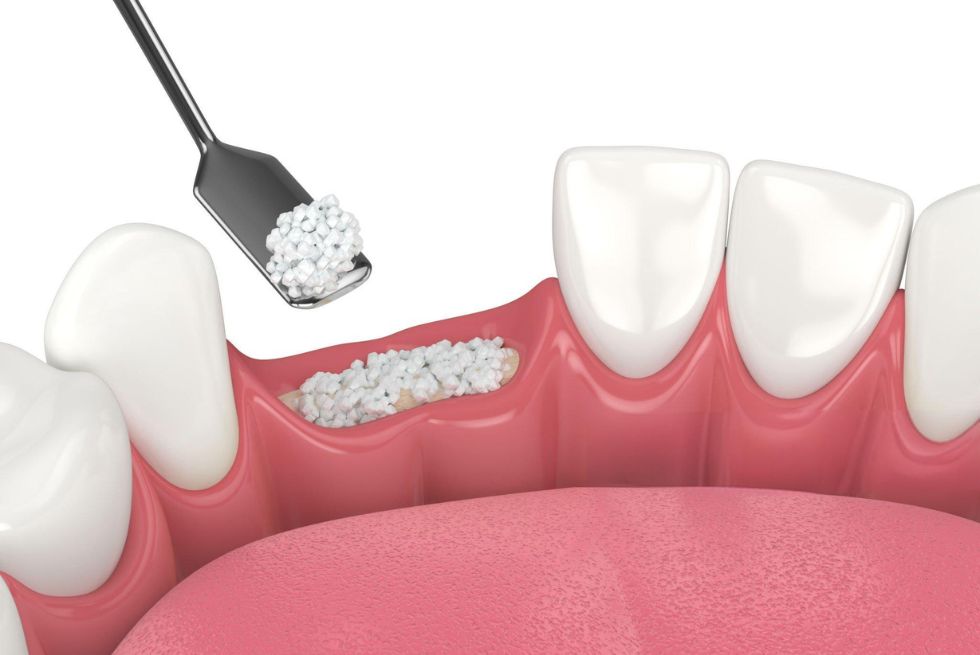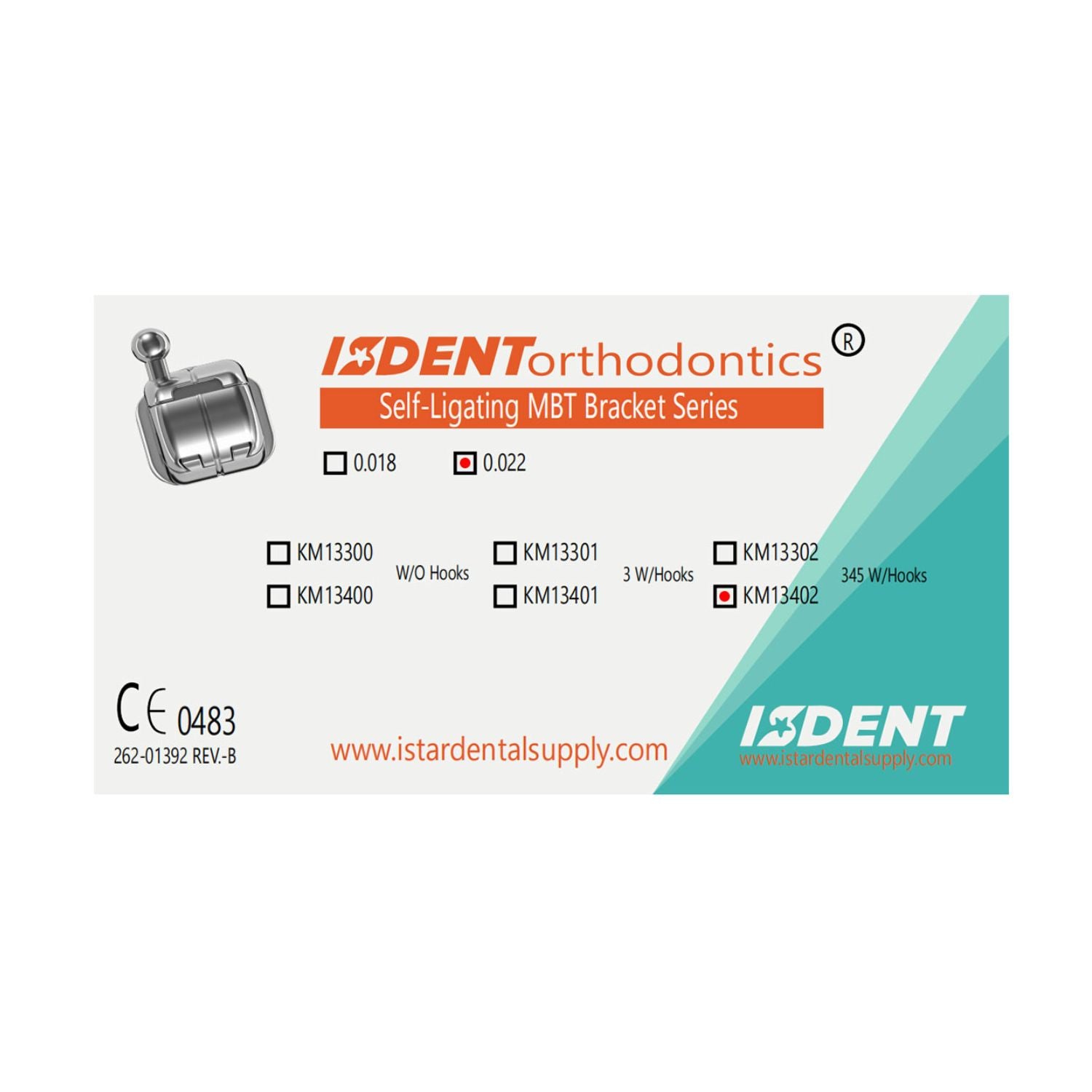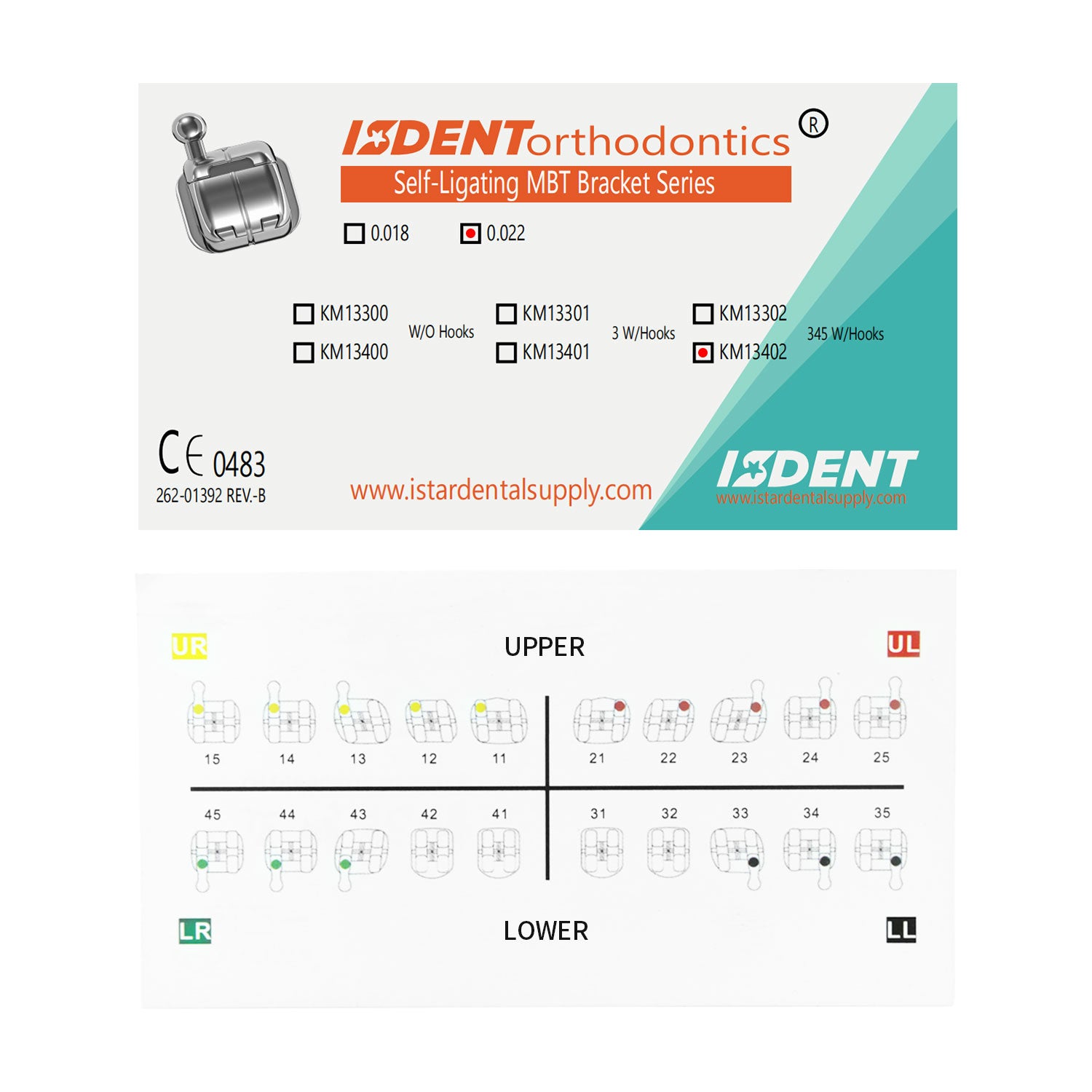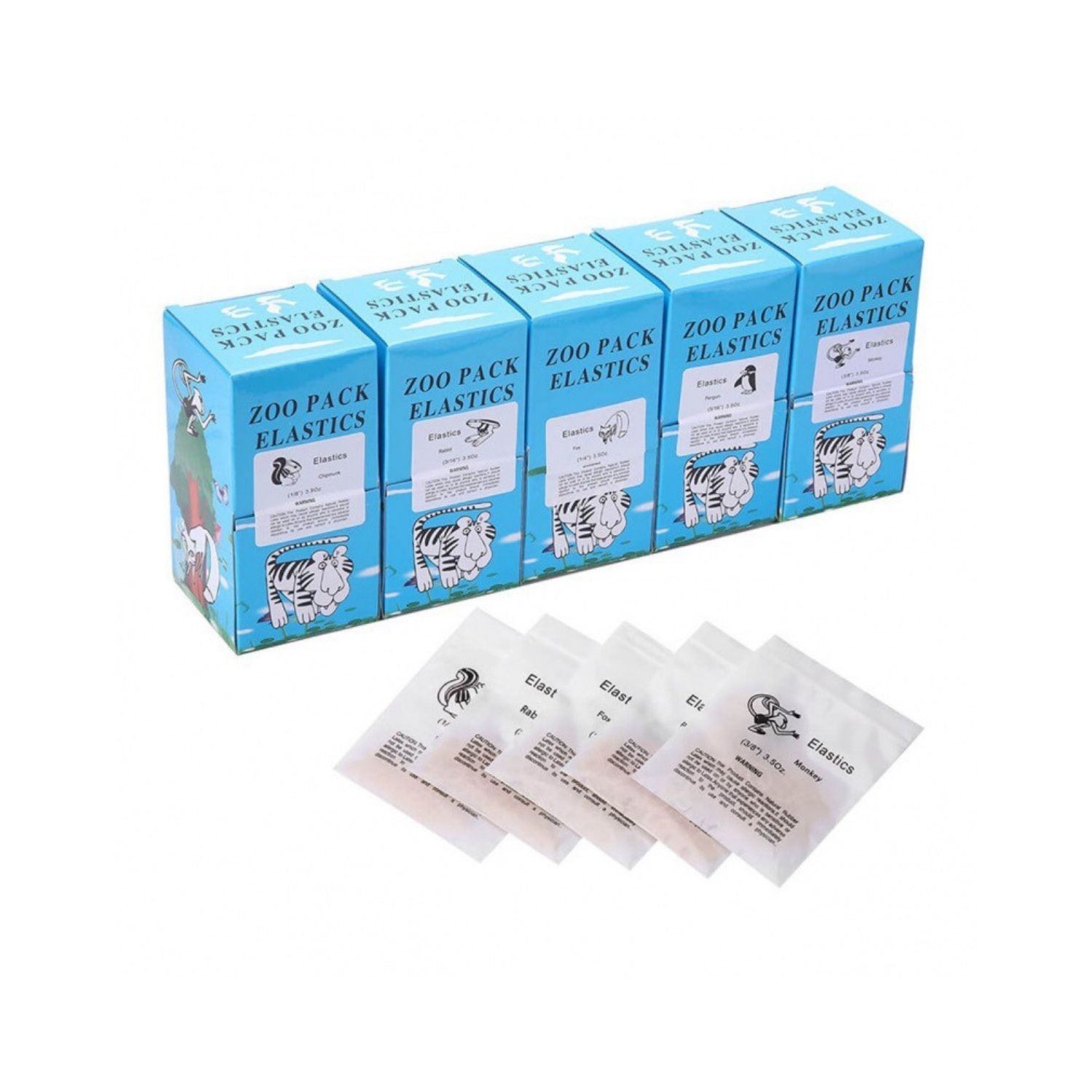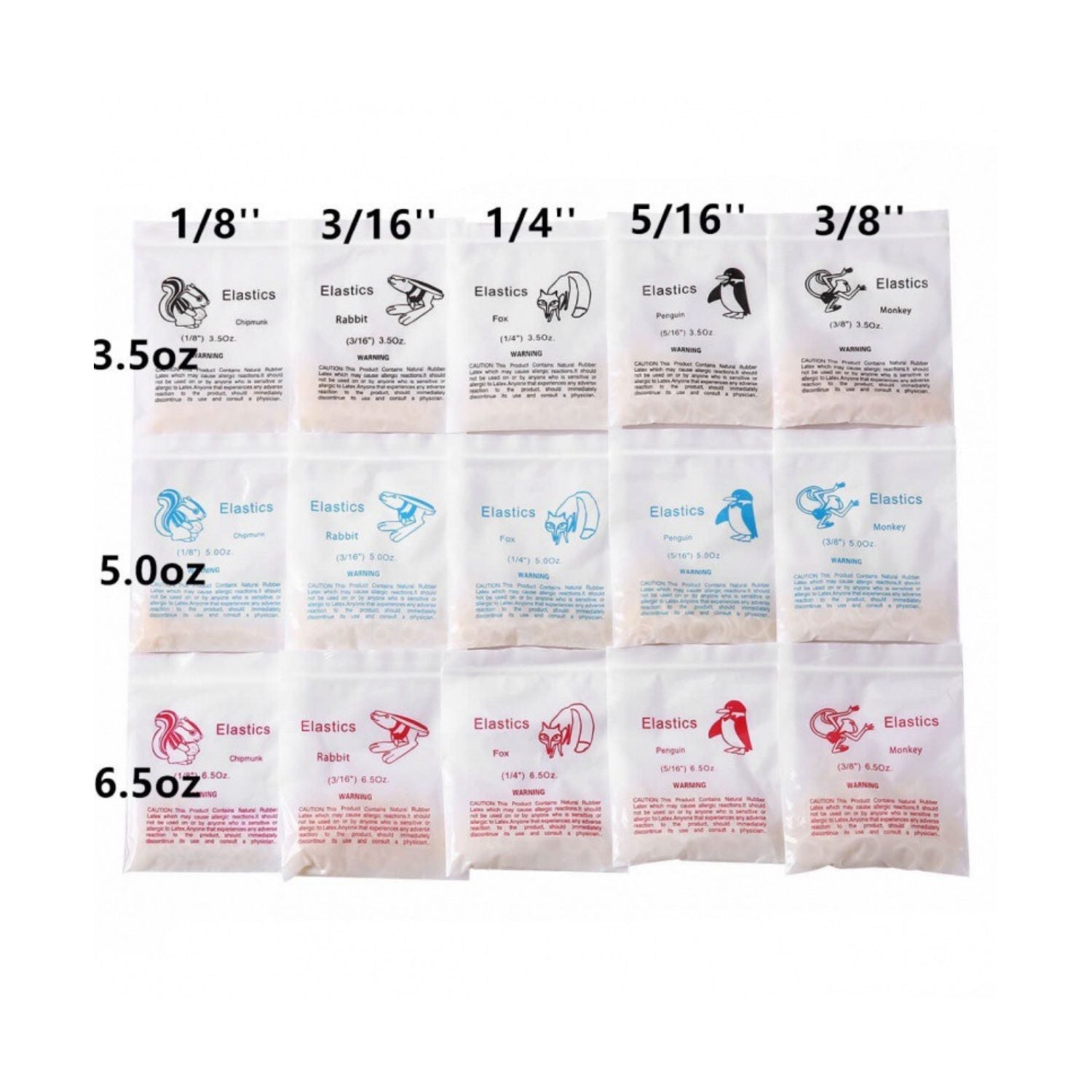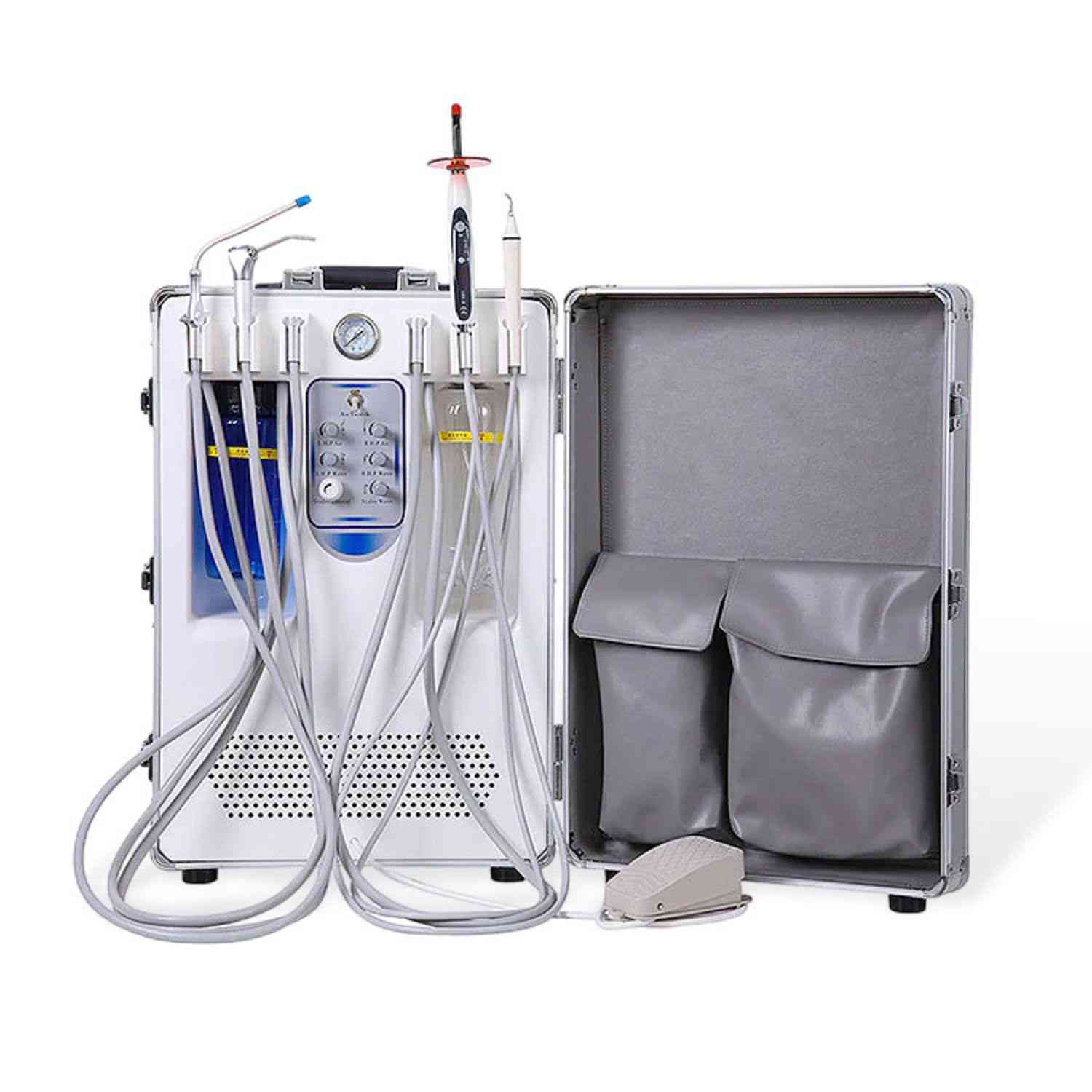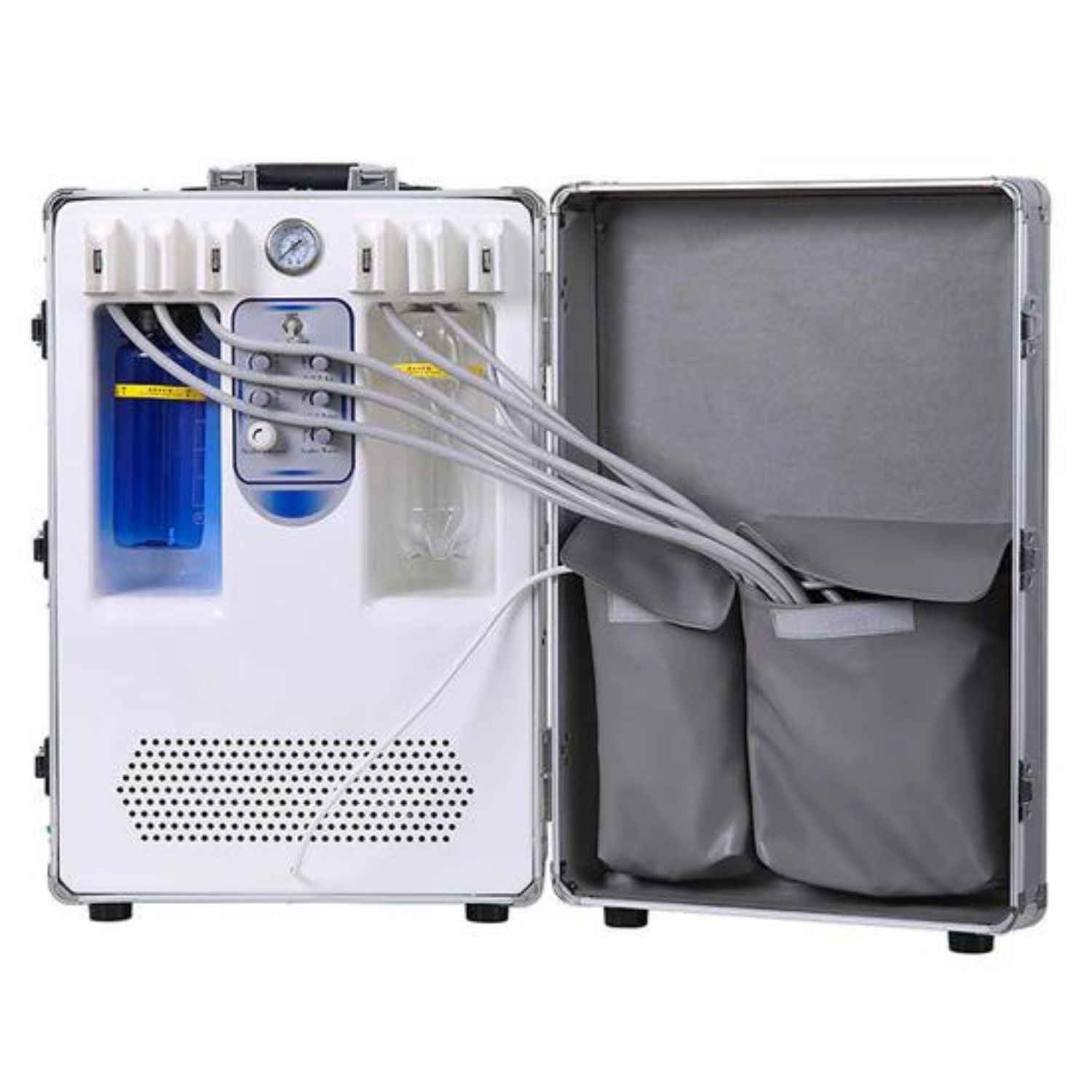كشف غموض ترقيع عظام الأسنان: اختيار أفضل مادة لزراعة الأسنان
تتعمق هذه المقالة في عالم طعوم عظام الأسنان، موضحًا سبب ضرورتها في كثير من الأحيان لتحقيق النجاح زراعة الأسنان وضع واستكشاف مختلف مواد ترقيع العظام متوفر. سواء كنت طبيب أسنان، أو عيادة أسنان، أو مختبر أسنان، أو مستشفى أسنان، أو كلية طب أسنان، فإن هذا الدليل الشامل سيزودك بالمعرفة اللازمة لفهم واختيار أفضل مادة لتطعيم العظام للحصول على أفضل النتائج للمريض ويوضح لماذا يستحق القراءة.
ما هي عملية ترقيع عظام الأسنان ولماذا هي ضرورية؟
أ طعم عظم الأسنان هو إجراء جراحي يستخدم لزيادة كمية عظم في جزء الفك الذي تعرض فقدان العظام. هذا فقدان العظام يمكن أن يحدث ذلك نتيجة لأسباب مختلفة، بما في ذلك خلع الأسنان، أو أمراض اللثة، أو الصدمات. زراعة الأسنان، والتي تعمل كجذور أسنان اصطناعية، تتطلب ما يكفي عظم الحجم والكثافة لضمان وضع آمن واستقرار طويل الأمد. عندما لا يكون هناك عظمة كافية لدعم غرسة، طعم عظمي يصبح ضروريا. مادة الطعم يعمل كـ سقالة للعظم الجديد النمو، والتكامل في نهاية المطاف مع الوضع الحالي عظم لإنشاء أساس متين ل زراعة الأسنان.
تتضمن العملية وضع مادة طعم العظام في موقع الطعمحيث يحفز عملية الشفاء الطبيعية في الجسم لتوليد عظم جديد. ال مادة الطعم يمكن الحصول عليها من مصادر مختلفة، وسنتحدث عنها لاحقًا. الهدف النهائي هو ترقيع العظام هو استعادة بنية عظم الفك، مما يسمح بالنجاح وضع الغرسة وإبتسامة مستعادة.
4 أنواع من مواد ترقيع العظام المستخدمة في طب الأسنان
اختيار الصحيح نوع مادة الطعم العظمي أمر بالغ الأهمية لنجاح ترقيع العظام لزراعة الأسنان. هناك عموما 4 أنواع من العظام الطعوم شائعة يستخدم في طب الأسنان:
- الطعوم الذاتية (الطعوم العظمية الذاتية): يتضمن هذا استخدام معلومات المريض الخاصة عظم، يتم حصادها عادة من منطقة أخرى من الفم أو الجسم (على سبيل المثال، الذقن، الورك). عظم ذاتي يُعتبر "المعيار الذهبي" لأنه يحتوي على الكائنات الحية خلايا العظام والتي يمكن أن تساهم بشكل مباشر في تكوين عظام جديدةيقلل من خطر الرفض ويعزز الشفاء بشكل أسرع. ومع ذلك، يتطلب موقعًا جراحيًا ثانيًا لحصاد عظم، مما قد يزيد من انزعاج المريض.
- الطعوم الخيفية: هذا نوع من طعوم العظام يستخدم المعالجة عظم من متبرع بشري (جثة). عظم متبرع يخضع لفحص دقيق وتعقيم دقيق للقضاء على خطر انتقال الأمراض. توفر الطعوم الخيفية هيكلًا سقالة لنمو العظام الجديدة وإزالة الحاجة إلى موقع جراحي ثان.
- زراعة الأعضاء الغريبة: وهذا يتضمن استخدام عظم من مصدر حيواني، غالبًا من الأبقار. على غرار الطعوم الخيفية، تُعالَج الطعوم الغريبة لإزالة المكونات العضوية، تاركةً وراءها إطارًا معدنيًا يدعم تكوين العظام. إن زراعة الخلايا الغريبة متاحة بسهولة ومتوافقة حيوياً.
- البلاستيدات الألوبلاستية: البلاستيدات الألوبلاستية هي مواد طعم العظام الاصطناعية مصنوعة من مواد متوافقة حيويًا مثل فوسفات الكالسيوم، أو هيدروكسي أباتيت، أو الزجاج النشط حيويًا. هذه المواد الاصطناعية تم تصميمها لتقليد بنية الطبيعة عظم وتعزيز تجديد العظامإنها توفر العديد من المزايا، بما في ذلك التوافر غير المحدود وعدم وجود خطر انتقال الأمراض.
ISTAR لمستلزمات طب الأسنان تفهم أن اختيار المواد المناسبة هو مفتاح رضا المريض ونجاح ممارستك.
كيف تعمل عملية ترقيع عظام الأسنان على تعزيز تجديد العظام؟
سحر طعم عظم الأسنان تكمن في قدرته على تحفيز عملية بناء العظام الطبيعية في الجسم. مادة الطعمبغض النظر عن مصدره، يعمل كـ سقالة لتكوين عظام جديدة.
بمجرد يتم وضع طعم عظميتبدأ آليات الشفاء في الجسم في العمل. تتسلل الأوعية الدموية إلى الطعم، مما يجلب العناصر الغذائية الأساسية و خلايا العظام (الخلايا العظمية) إلى الموقع. الخلايا العظمية مسؤولة عن إنشاء أنسجة عظمية جديدة.
- الطعوم العظمية الذاتية تتمتع بميزة لأنها تحتوي على خلايا عظمية حية تبدأ في التكون على الفور عظم جديد.
- الطعوم الخيفية، والطعوم الغريبة، والطعوم الاصطناعية توفر إطارًا يشجع على هجرة وانتشار الخلايا العظمية للمريض. تتحلل هذه المواد تدريجيًا مع عظم جديد يحل محلهم.
مع مرور الوقت، مادة الطعم يتكامل مع العظم المحيط، مما يزيد من حجم العظام وكثافتها. هذه العملية، المعروفة باسم تجديد العظام، يخلق أساسًا قويًا ومستقرًا لـ زراعة الأسنان التنسيب.
ما هي مخاطر وفوائد مواد ترقيع العظام المختلفة؟
كل نوع مادة الطعم العظمي لها مجموعة خاصة بها من المزايا والعيوب:
| مادة الطعم | المزايا | العيوب |
|---|---|---|
| الطعم الذاتي (العظم الذاتي) | أعلى معدل نجاح، يحتوي على خلايا عظمية حية، شفاء أسرع، لا يوجد خطر الرفض. | يتطلب موقعًا جراحيًا ثانيًا، مع احتمال حدوث ألم ومرض في موقع المتبرع. |
| الطعم الخيفي (عظم المتبرع) | يزيل الحاجة إلى موقع جراحي ثانٍ، ومتاح بسهولة، ومعدل نجاح جيد. | خطر صغير لانتقال المرض (على الرغم من ندرته الشديدة بسبب الفحص الدقيق)، والشفاء أبطأ قليلاً من الطعوم الذاتية. |
| زراعة عظام حيوانية | متوفر بسهولة، متوافق حيويا، معدل نجاح جيد. | احتمال حدوث رد فعل تحسسي (نادرًا)، والشفاء أبطأ قليلاً من الطعوم الذاتية. |
| البلاستيدات الألوبلاستية (الاصطناعية) | توفر غير محدود، لا يوجد خطر انتقال الأمراض، متوافق حيوياً، تركيبات مختلفة متاحة. | قد لا تكون فعالة مثل الطعوم الذاتية في جميع الحالات، فقد يتم امتصاص بعض المواد بسرعة كبيرة أو ببطء شديد. |

ماذا تتوقع أثناء عملية ترقيع عظام الأسنان؟
إجراءات ترقيع عظام الأسنان يتم إجراؤها عادةً تحت تأثير التخدير الموضعي، وفي بعض الأحيان مع التخدير لضمان راحة المريض. إجراء جراحي يتضمن الخطوات التالية:
- شق: يقوم طبيب الأسنان بعمل شق في أنسجة اللثة لكشف الجزء السفلي منها عظم حيث هناك حاجة إلى الطعم.
- وضع الطعم: المختار مادة طعم العظام يتم وضعها بعناية في الموقع المُجهز.
- وضع الغشاء (اختياري): في بعض الحالات، قد يتم وضع غشاء قابل للامتصاص فوق الطعم لاحتواء المادة ومنع الأنسجة الرخوة من النمو داخله. عظم.
- إنهاء: يتم إعادة وضع أنسجة اللثة وخياطتها.
عادةً ما تشمل الرعاية بعد الجراحة مسكنات الألم، ومضادات حيوية للوقاية من العدوى، وتعليمات حول نظافة الفم. يختلف وقت الشفاء باختلاف الحالة. نوع الطعم وقدرة الفرد على الشفاء، ولكن الأمر يستغرق عادة عدة أشهر حتى طعم للتكامل الكامل مع العظم المحيط.
ما هي العوامل التي تؤثر على اختيار مادة طعوم العظام؟
ال اختيار مادة الطعم العظمي يعتمد على عدة عوامل منها:
- كمية فقدان العظام: للقاصر فقدان العظامقد تكون زراعة الخلايا الجذعية أو زراعة الخلايا الغريبة كافية. فقدان العظام، قد يتم تفضيل الطعوم الذاتية أو الطعوم الخيفية.
- مكان الطعم: مكان المفقودين عظم في الفك يمكن أن يؤثر على اختيار مادة ترقيع العظام.
- صحة المريض: يمكن أن تؤثر الصحة العامة والتاريخ الطبي وأي ظروف موجودة على الاختيار.
- تفضيلات وخبرة طبيب الأسنان: لدى أطباء الأسنان تفضيلاتهم وخبراتهم الخاصة مع المواد المختلفة.
- يكلف: تكلفة مختلفة مواد ترقيع العظام يمكن أن تختلف بشكل كبير.
متى تصبح عملية ترقيع عظام الأسنان ضرورية للغاية لزراعة الأسنان؟
أ طعم عظم الأسنان ضروري للغاية ل زراعة الأسنان عندما لا يكون هناك ما يكفي عظم حجم أو كثافة دعم الغرسة. قد يكون هذا القصور بسبب:
- فقدان الأسنان: بعد خلع الأسنان، العظم السنخي (العظم الذي يحيط بالأسنان ويدعمها) يبدأ في الامتصاص بشكل طبيعي.
- أمراض اللثة: يمكن أن يؤدي مرض اللثة المتقدم إلى تدمير عظم التي تدعم الأسنان مما يؤدي إلى فقدان العظام.
- صدمة: يمكن أن تؤدي إصابات الفك إلى فقدان العظام.
- العيوب الخلقية: قد يولد بعض الأفراد بنقص في عظم في مناطق معينة من الفك.
- استخدام أطقم الأسنان على المدى الطويل: يمكن أن تؤدي أطقم الأسنان إلى تسريع فقدان العظام بسبب الضغط المستمر.
إذا كان زراعة الأسنان يتم وضعه في منطقة ذات مستوى غير مناسب عظم، قد يفشل في التكامل بشكل صحيح، مما يؤدي إلى عدم استقرار الغرسة أو فشلها. طُعم عظمي يضمن وجود عظمة كافية لدعم ال زراعة الأسنان وتعزيز النجاح على المدى الطويل.
هل يمكن إجراء عملية ترقيع العظام وتركيب الزرعات في نفس الوقت؟
في بعض الحالات، ترقيع العظام ووضع الزرعات يمكن القيام بذلك في وقت واحد. وهذا ما يُعرف باسم وضع الزرع الفوري مع ترقيع العظام. هذا النهج ممكن عادة عندما يكون هناك فقط مشاكل بسيطة فقدان العظام و ال عظم موجود يوفر ثباتًا أوليًا كافيًا للزرع.
ومع ذلك، إذا كان هناك أهمية كبيرة فقدان العظام، عادة ما يكون النهج التدريجي ضروريًا. طُعم عظمي يتم وضعه أولاً، وبعد فترة شفاء تصل إلى عدة أشهر (للسماح بـ تكوين عظام جديدة)، ال زراعة الأسنان تم وضعه.
الابتكارات في مواد وتقنيات ترقيع العظام
مجال ترقيع العظام يتطور باستمرار، مع البحث والتطوير المستمر مما يؤدي إلى مواد وتقنيات جديدة.وتشمل بعض الابتكارات البارزة ما يلي:
- عوامل النمو: استخدام عوامل النمو، مثل البلازما الغنية بالصفائح الدموية (PRP) أو بروتينات تكوين العظام (BMPs)، لتعزيز تجديد العظام. هذه عوامل النمو تحفز نمو العظام الجديدة وتسريع عملية الشفاء.
- الطباعة ثلاثية الأبعاد: إنشاء تصميم مخصص طعم عظمي سقالات باستخدام تقنية الطباعة ثلاثية الأبعاد. يمكن تصميم هذه السقالات لتناسب العيب المحدد وتوفر ملاءمة دقيقة.
- المواد المحاكية للحيوية: تطوير مواد طعم العظام الاصطناعية التي تحاكي بشكل أوثق تكوين وبنية الطبيعة عظم، مما يؤدي إلى تحسين التوافق الحيوي و تكوين العظام.
ISTAR لمستلزمات طب الأسنان ملتزمة بالبقاء في طليعة هذه التطورات، وتزويد محترفي طب الأسنان بأحدث وأكثر الطرق فعالية ترقيع العظام الحلول. لدينا مجموعة مختارة من معدات طب الأسنان لتلبية احتياجاتك.

الأسئلة الشائعة:
-
ما هي أفضل مادة لتطعيم العظام لزراعة الأسنان؟
ال "أفضل مادة لتطعيم العظام"إنها مسألة ذاتية وتعتمد على الظروف الفردية. عظم ذاتي غالبًا ما يُعتبر هذا هو المعيار الأمثل، ولكن خيارات أخرى مثل الطعوم الخيفية، والطعوم الغريبة، والزرعات الاصطناعية قد تكون فعّالة للغاية. يُعدّ إجراء مناقشة شاملة مع طبيب أسنان مؤهل أمرًا ضروريًا لاختيار مواد طعوم العظام.
-
كم من الوقت يستغرق شفاء طعوم عظام الأسنان؟
تختلف مدة الشفاء، لكنها تتراوح عادةً من 3 إلى 9 أشهر. عوامل مثل نوع الطعمإن حجم العيب والصحة العامة للمريض تؤثر على عملية الشفاء.
-
هل عملية ترقيع عظام الأسنان مؤلمة؟
عادةً ما تُجرى العملية تحت تأثير التخدير الموضعي، لذا لن تشعر بأي ألم أثناء الجراحة. يمكن تخفيف الانزعاج بعد الجراحة باستخدام مسكنات الألم.
-
ما هي نسبة نجاح عملية ترقيع عظام الأسنان؟
طب الأسنان طعوم العظام تتمتع بمعدل نجاح مرتفع، يتجاوز 90% عادةً. ومع ذلك، يعتمد النجاح على عوامل مختلفة، بما في ذلك صحة المريض، نوع مادة الطعم المستخدمة، ومهارة الجراح.
-
هل هناك بدائل لطعوم عظام الأسنان؟ في بعض الحالات، قد يُنظر في علاجات بديلة، مثل زراعة قصيرة أو زراعة عظم الوجنة. هذه خيارات للمرضى الذين قد عدم وجود عظام كافية للغرسات التقليدية. ولكن هذا ليس ممكنًا دائمًا.
-
كم تكلفة عملية ترقيع عظام الأسنان؟
تكلفة طعم عظم الأسنان يختلف على نطاق واسع اعتمادًا على نوع مادة الطعم المستخدمة، وتعقيد الإجراء، ورسوم طبيب الأسنان.
النقاط الرئيسية:
- ترقيع عظام الأسنان غالبًا ما تكون ضرورية لتوفير ما يكفي عظم للنجاح زراعة الأسنان التنسيب.
- هناك أربعة أشياء رئيسية أنواع مواد الطعم العظمي: الطعوم الذاتية، الطعوم الخيفية، الطعوم الغريبة، والطعوم الاصطناعية. لكل منها مزاياها وعيوبها.
- طعوم العظام تعمل عن طريق تحفيز عملية بناء العظام الطبيعية في الجسم، مما يؤدي إلى تجديد العظام.
- ال اختيار مادة الطعم العظمي يعتمد على عوامل مختلفة، بما في ذلك كمية فقدان العظام, موقع الطعم، وصحة المريض.
- ترقيع العظام وزرعها يمكن القيام بذلك في بعض الأحيان في وقت واحد، ولكن قد يكون من الضروري اتباع نهج تدريجي في حالات حدوث مشكلات كبيرة. فقدان العظام.
- يمكن أن تساعد الابتكارات مثل عوامل النمو والطباعة ثلاثية الأبعاد في تجديد العظام.
من خلال فهم تعقيدات طعوم عظام الأسنانيمكن لأطباء الأسنان وعيادات الأسنان ومختبرات الأسنان ومستشفيات الأسنان ومدارس طب الأسنان اتخاذ قرارات مستنيرة بشأن مواد ترقيع العظاملضمان أفضل النتائج الممكنة لمرضاهم. تذكروا دائمًا استشارتنا. ISTAR لمستلزمات طب الأسنانلضمان تقديم أفضل رعاية لعملائك. اطلع على بعض خدماتنا تقويم الأسنان المنتجات، وكذلك منتجاتنا الأشعة السينية للأسنان، و وحدات طب الأسنانبالإضافة إلى ذلك، فإننا نقدم العديد من المنتجات المستخدمة في إندو إجراءات.

